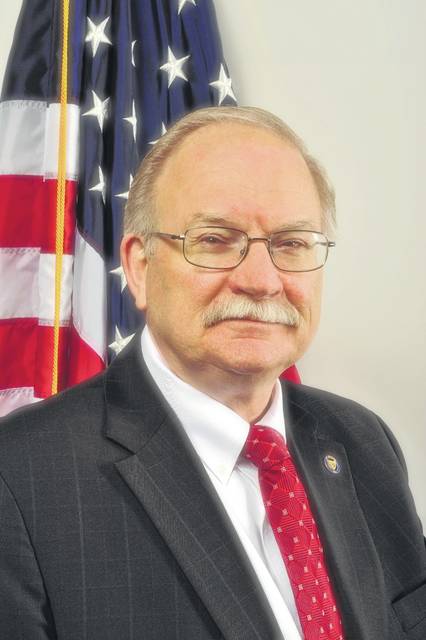
I’m always surprised by what people know and, what I learn they don’t know. I experienced such a moment recently while having a conversation about incentives the city should be offering potential businesses. I explained as best I could the incentives that have previously been offered, and when I mentioned the airport, discovered that the individual with whom I was speaking had no idea the Sidney City Airport was owned by the city of Sidney.
There is no doubt that the Sidney City Airport is a hidden gem. Most residents likely never visit the airport. It is, however, a vital part of Sidney’s economic development efforts. I previously wrote about the airport in 2017 (Local Government 117) when I penned a series of articles on local boards and commissions. It is not my intent to cover that same information here.
Let me begin by noting that the city of Sidney purchased the airport in 1963. The airport was dedicated on June 14, 1970. There is no one active in local government today who was involved in the decision to purchase the airport, so we are left to read the minutes of City Council meetings from that time in an attempt to learn why council and the city’s management team believed the purchase was important to the future of the community.
It is clear that economic development was a key part of the equation. At that time, both of Sidney’s major employers, Copeland Corporation and The Stolle Corporation, had corporate aircraft based at the airport.
Just as council members at the time believed the airport was one of the levers of economic development, council members over time have continued to believe the airport to be an important economic development tool. On an annual basis, corporate aircraft make up approximately 50 percent of the traffic at the airport.
Some of the area businesses who regularly use the airport include Airstream (Thor Industries), Aerospace Dynamics Group, Cargill, Continental Express, Emerson, Everyday Technologies, Freshway Foods, Honda, Love’s Travel Stops, Schwan’s (MaMa Rosa’s), and Weaver Eggs, among others. In fact, we have been told that one of the reasons Love’s found Sidney to be attractive was the availability of the airport so that their executives could frequently fly in to check on operations.
I might also mention that most of the top performers who appear at the Country Concert use the airport. They fly in and then meet up with their backup performers and crew. Typically they will arrive at the venue together in their tour bus. Although they arrive at the site in their “tour bus,” the headliners certainly do not travel here in a bus!
In 2014, the airport’s main runway was extended to 5,013 feet (5,000 feet is the ‘magic’ number for most jets.) As a result, the airport is listed by the Federal Aviation Administration as a general aviation airport. It is included in the National Plan of Integrated Airport Systems, language pilots understand will accommodate their aircraft.
During the 12-month period ending Aug. 1, 2018, the airport had approximately 20,500 aircraft operations, an average of 56 per day. There are 34 aircraft based at the airport. Much of the income that is used to help defray the cost of operating the airport comes from fuel sales. In 2018, the city of Sidney subsidized airport operations by $86,000.
The Sidney Airport operates a dual runway system; in addition to the primary 5,013 foot, 75-foot-wide runway, there is a crosswind runway that is 2,981-feet-long and 50-feet-wide. The crosswind runway will accommodate aircraft weighing less than 60,000 pounds in most operational conditions.
Since 1989, the city has contracted with an airport manager. The airport manager is an independent contractor who administers the airport under the direction of city staff. All revenue and expenditures flow through the city’s finance department and the airport manager has a fixed salary package.
The current airport manager is Mike Chappie, the owner and operator is Aerotech Aviation. Mike has served as the airport manager since 2011. In addition to managing the airport, aircraft maintenance, fuel sales and a flight school are all services currently offered at the Sidney City Airport.
As I mentioned at the beginning of the article, although the city has owned the airport for more than half a century, it remains one of the city’s assets about which many residents are unaware. The airport property contains approximately 265 acres and has enough land that there is room for additional expansion.
Council benefits greatly from advice received from the Airport Advisory Board. The Airport Advisory Board makes recommendations to the city on matters related to the operation and future development of the airport.
The board consists of seven members appointed by the mayor with council confirmation. The members include a city council member, who serves as council’s liaison to the board. The other members represent corporate aviation, general aviation, the Sidney-Shelby County Chamber of Commerce and the Orange Township Trustees.
Members serve staggered three-year terms, and can serve a maximum of three terms. The board meets at 6:30 p.m. the second Thursday during the months of January, April, July, and October. Their meetings are held at the airport terminal.
Current board members include Vice-Mayor Mardie Milligan, Gary Carter and Tim Weaver representing general aviation, Steven Faler representing the Sidney-Shelby County Chamber of Commerce, Blane Miller representing Orange Township, and Gary Heitmeyer and Mike Toal representing corporate aviation. Council as well as residents owe them a debt of gratitude for their willingness to serve.


